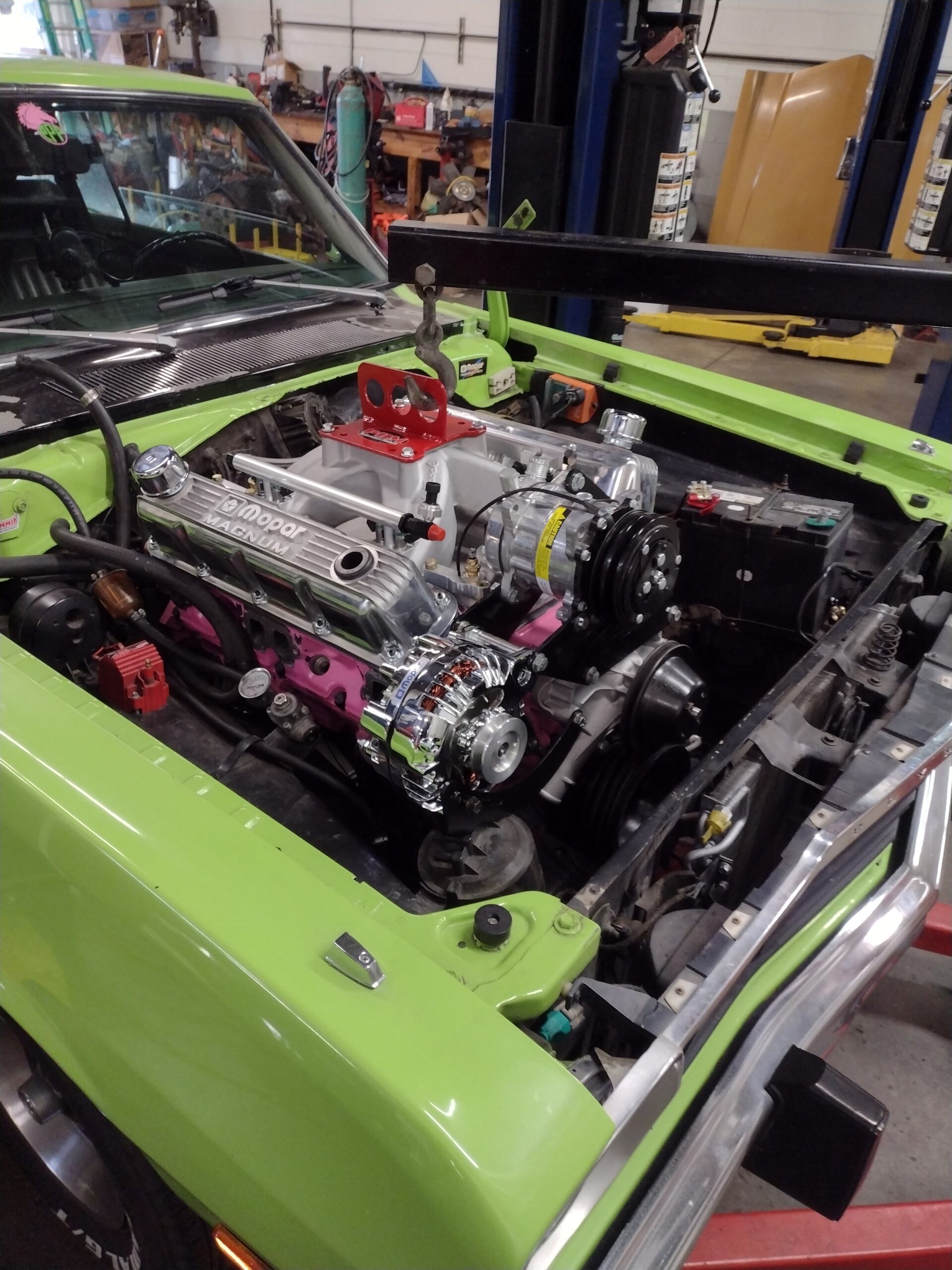
Swapping in a built 360 Magnum
Tom wanted to build a classic American Muscle Car, and after kicking some tires, found a 1973 Plymouth Scamp with a 318 V8 (the only V8 offered for the car in that year). Some previous restoration work had been undertaken and the body was straight and sound, so it seemed like a good canvas for his future vision.
We’ve worked previously with Tom on this project to sort out the steering and front suspension and to upgrade the car in other ways including the addition of a digital dash. During those visits, we worked on drivability and tracking down the cause of a persistent miss. It turned out that the tired 318 motor had a dead #8 cylinder, only making 60 lbs of compression.
Tom took the news in stride, and used it to catalyze the next phase of his build starting with a freshly machined 360 Magnum block fitted with roller cam, roller rockers, .030 over hypereutectic pistons. A set of ceramic coated headers, new 2.5″ dual exhaust pipes and turbo mufflers deliver the nostalgic exhaust note, while an Edelbrock ProFlo-4 intake, throttle body and computer modernized the induction to deliver power and modern drivability. The Magnum heads and intake required a small amount of machine work to adapt the bolt locations for the intake.
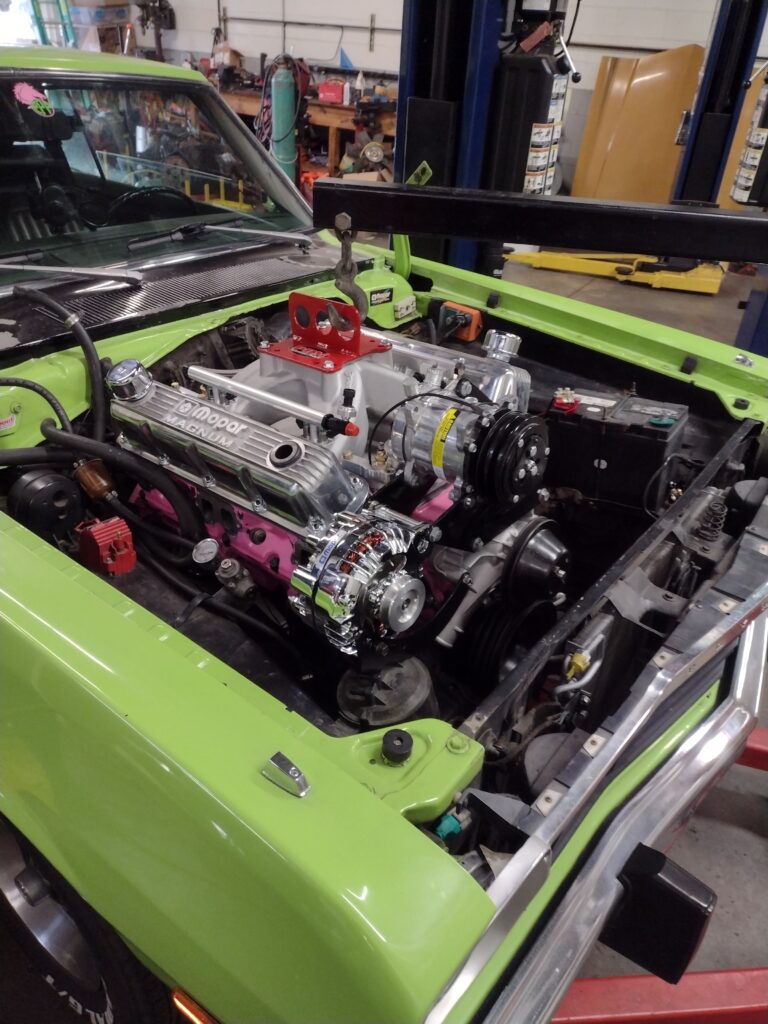
The Magnum 360 was dimensionally the same as the LA 318 it replaced with only some slight modifications such as a spacer on the driver side motor mount, modification to the lower alternator bracket (section, reweld, build up) to fit the bolt location on the Magnum head (about 1/2″ variance) and elongation of one of the 4 torque converter to flexplate bolt holes required to bolt it in.
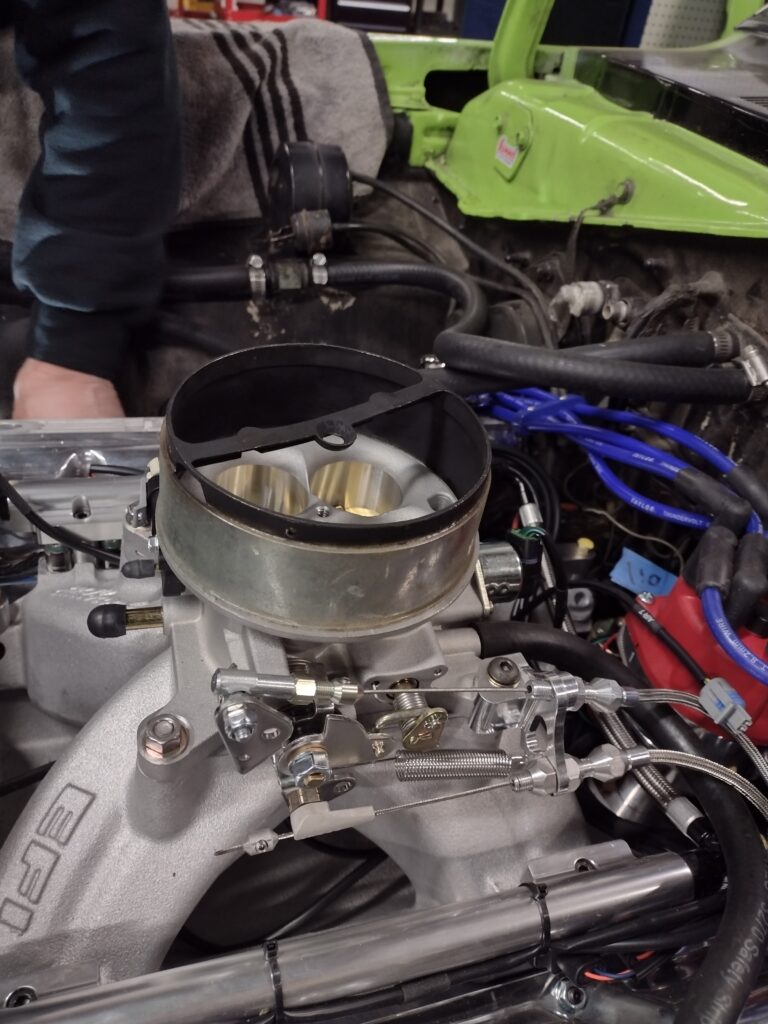
The Edelbrock FI system uses 35lb / hr injectors and a 58 PSI Holley in tank pump (internally regulated) and sender combination that was a direct bolt in replacing the stock sender and fuel suction line. This system combination allows operation without a return line. We used a compression to AN fitting to connect a matching AN6 line to the fuel rail for a neat and finished appearance. Lokar cables were used for the trans kickdown and throttle. A 1″ spacer under the air cleaner was required to provide clearance for the throttle linkage and allowed the hood to close with the open element 14″ air cleaner. Shown above was a 2″ spacer used for test fitting. This fuel system supports up to 550 hp.
The headers were a tight fit, especially on the driver side where they needed to be fit in the car before the engine settled into place. There wasn’t much room to work in some of the header bolts and so 12 point bolt heads are a big help. Once the headers were in, we fitting the dual exhaust kit and mufflers with some modification needed on the passenger side to line up with the relief in the cross member. The kit came with a copious number of muffler clamps which we used while test fitting the system completely, then tack welded, remove the clamps and seam welded all the joints except for tail pipe connection to the mufflers off the car to ensure leak free connections. The single clamp at the muffler exists provide a hanger attachment point, and allow the tailpipes to be removed in case future services necessitate removal of the exhaust. (We know a rear end swap and manual trans conversion are in the plan)
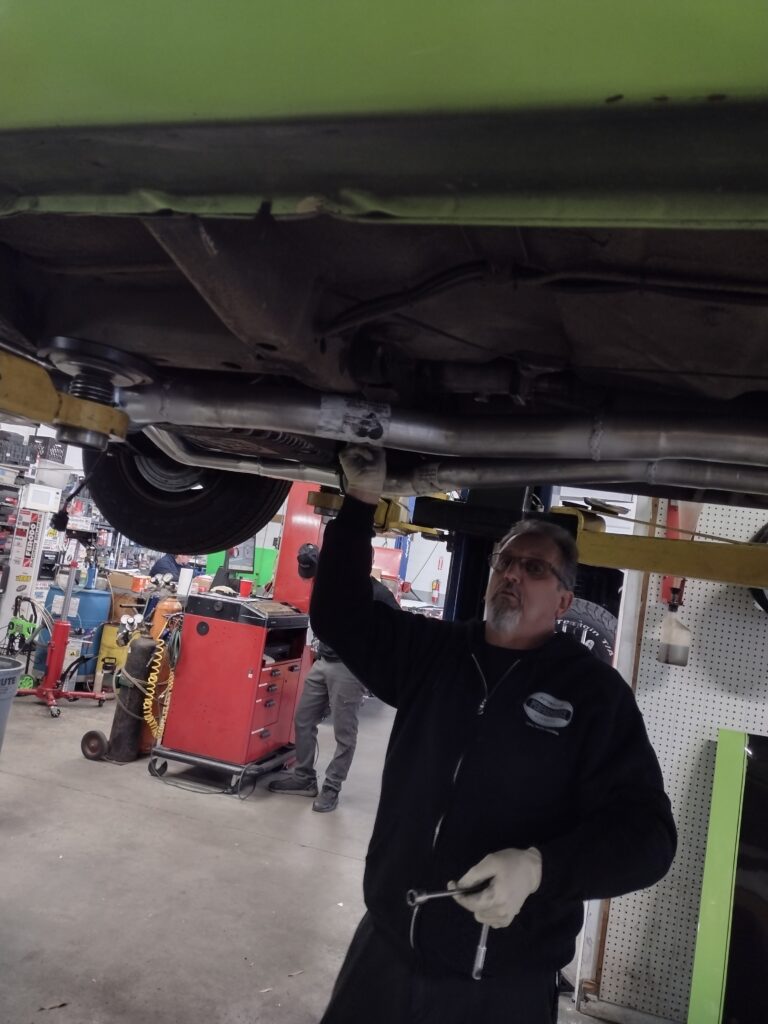
The steering linkage passed through the driver side header pipes adding an additional consideration to the install, and two of the plug wires are in close contact with the primary pipes on the driver side, so we added heat sleeves to all the plug wires.
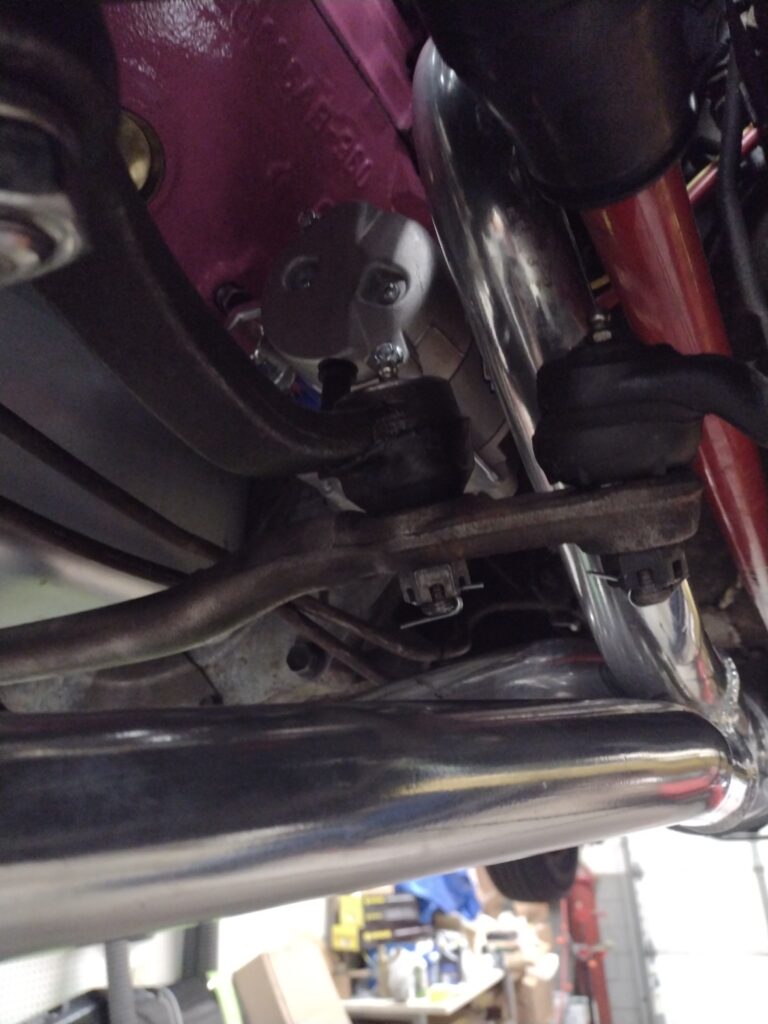
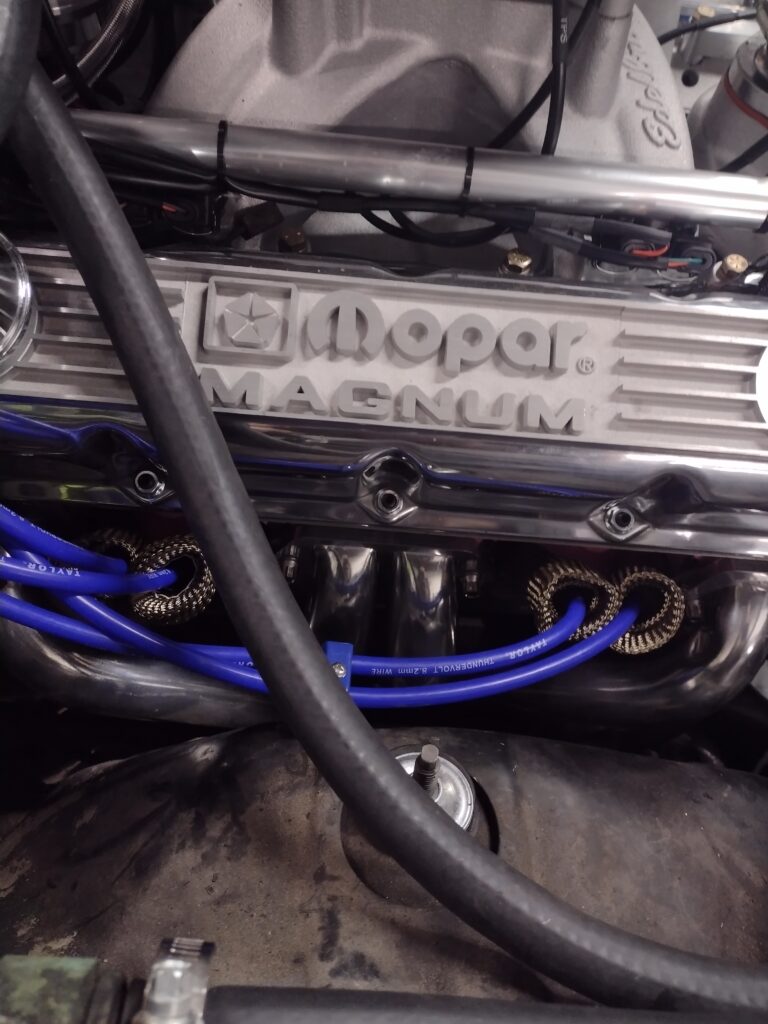
After ensuring an oil prime, timing was set based on the balancer markings and validation of TDC through #1 cylinder bore, we were ready to download the base tune and start the car. Edelbrock provides a free app and with a few simple questions about engine displacement, Cam selection (one of three ranges of specs), injector size, fuel pump PSI (43 or 58) and whether naturally aspirated or super / turbocharged, a base tune is downloaded. The engine fired on the first go and ran at a fast idle. A setup wizard guided through setting a target idle RPM and adjusting the throttle stop so that the IAC had sufficient range to manage. Afterward, the system is self learning as one expects, and supports additional advanced tuning through the app.
Tom has an upgraded rear end ready to go and will be back with the Scamp for that install soon stay tuned!
